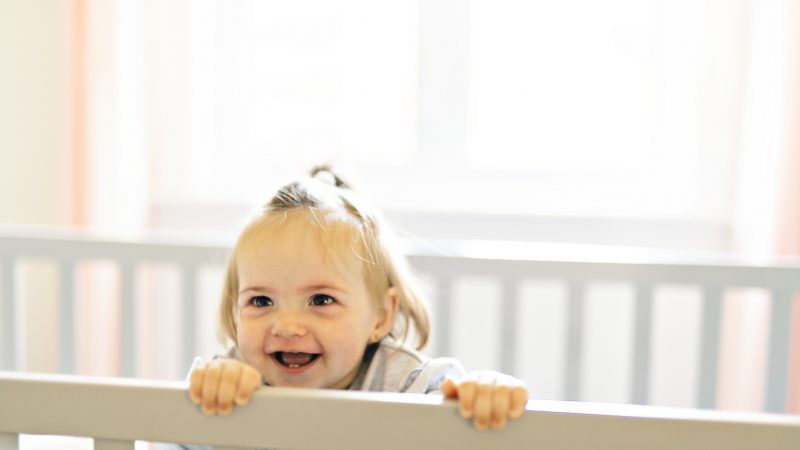Fisher Price's Rock 'n Play Recall: A Reminder That Perfect Safety Is Impossible
The toy company allegedly failed to test its miracle cure for cranky baby syndrome.

The recent recall of the Fisher Price Rock 'n Play—a strange name for a device that was designed for babies to lie 'n nap—has parents outraged, even when they are on opposite sides of the issue.
Many are angry that the device, a sort of baby hammock on a 30-degree angle, was on the market for 10 years before the recall, which occurred after 30 infants had died. Others are furious that a device that they rely on as a godsend—because it gets their babies to sleep when seemingly nothing else works—is being recalled at all. That group says that they trust the Rock 'n Play, that they've used it sometimes for several kids, and that they continue to feel it is safe when used properly. A typical Facebook comment on the recall reads:
I thought this was the best product ever when my son was born in 2010. I think this is when they first came out and the only color offered was yellow. My son slept so well and I liked that I could have him close to my bed. I raved about this to my newly pregnant friends and gave it five stars online. This is just tragic. Seems like nothing is truly safe.
That, by the way, is true. Nothing is perfectly safe. But the question is this: Should it have been safer?
An exhaustive report in The Washington Post found that Fisher Price never conducted the most basic kind of testing you would expect before bringing a baby sleeper to market, relying instead on a thumbs up from the single Texas doctor it consulted—a doctor so sub-par he later lost his license.
That is appalling. Fisher Price cranked out 4.7 million of these without the pre-market rigor you'd expect for a rattle.
On the other hand, it has become almost impossible to condone any product or practice, no matter how widespread and normally safe, once it is associated with even a single child tragedy.
This is why some day care centers have been ordered to get rid of their tree swings, and why the Richland and Spokane school districts in Washington got rid of their playground swings. This is why some kids in Canada can't wear their hall passes on lanyards anymore. This is why so many schools don't allow kids to walk home alone from the bus stop. One horrible tragedy, or even the fear of one, caused someone in authority to reclassify these statistically safe items and activities as untenably dangerous.
We do something similar when we pass laws named for a child after a heart-wrenching death. We are dearly hoping we can prevent another loss, even though it is often the case that the tragedy itself was so rare and aberrant that the chances of it happening again are basically the same, with or without the law.
But this legislative reflex is not the same as rightfully expecting products on the market to be tested and safe.
The problem is, it is really hard to untangle facts from fear, which you can see by the range of reactions to the Washington Post piece. Some noted that there are thousands of unexpected and poorly understood infant deaths each year, including "900 deaths due to accidental suffocation and strangulation in bed" in 2017, according to the Centers for Disease Control and Prevention. In contrast, the Rock n' Play is believed to have been responsible for 30 deaths over a decade.
It is so hard to hear about the death of any child, ever, in these safest times in human history. Thus we automatically suspect negligence when the worst comes to pass. Sometimes our suspicions are correct. Sometimes they are just the result of our inability to fathom the capriciousness of fate, or God's mysterious ways, depending on your outlook.
Life will continue to stun us with sorrow. That's why it is crucial to try to make things safe yet folly to assume that perfect safety at all times, in all places, in all situations, is attainable if only we pay enough attention. How any company is brave enough to bring a baby product to the market I just don't know.

Show Comments (10)